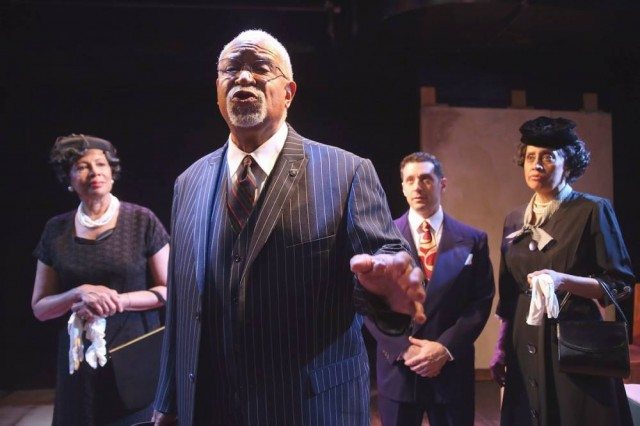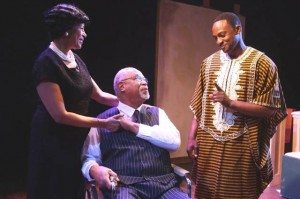

More than a year after his death, legendary playwright, poet, and activist Amiri Baraka is proving that he still has the ability to unite and educate through the arts. To envision Most Dangerous Man in America (W.E.B. Du Bois), Baraka's final play which never saw a production in his lifetime, Woodie King, Jr. and his New Federal Theatre took to Kickstarter, where they raised the funds they needed in less than two months. Now, thanks to King's partnership with the Castillo Theatre, the play has found a stage, and Baraka, Du Bois, and King will have their resonant voices heard yet again.
The wide-reaching and globe-spanning play focuses on the final decade of the life of the great scholar W.E.B. Du Bois, from his marriage to artist Shirley Graham to his immigration to Ghana, where he died in 1963. The central drama of the play, however, from which the play's title largely derives, is the 1951 trial of Du Bois and other members of the Peace Information Center for their "un-American" opposition to nuclear armament and advocacy for peace.
The human scope of the play is stark and touching, and Baraka carefully contrasts scenes of the day-to-day lives of Harlem residents with the large scale courtroom scenes and political rallies. With a minimal set, aside from courtroom benches and barbershop chairs, Baraka and King largely rely on the performances of the actors to guide the audience from place to place. Baraka also intersperses speeches by Du Bois, allowing the words of the intellectual to provide a moving through-line and to tie together for a contemporary audience the world-wide devotion he incited in marginalized people and the fear he struck in the rigid, conservative McCarthy-era government. Another legend in his own right, Art McFarland spent three decades as a Television News Anchor before returning to acting, and he lends the perfect air of gentle yet striking authority to the starring role of Du Bois. Petronia Paley is elegant and strong as Shirley Graham Du Bois, though relatively unrepresented for her own artistic accomplishments. In the larger ensemble, made up of a remarkable 18 actors, Te'La Curtis Lee and Keldrick Crowder stood out in their physical and emotional commitment to rapidly shifting roles.

Set in at least eight different locations across the country and the globe, the play may be slightly overambitious in its cinematic aspirations. Though exemplary of the bold experimentation for which both Baraka and King built their reputations, the shifts prove to be a bit clunky in their execution, and some scenes, such as vignettes from a beauty salon and a barber shop in Harlem, are shorter than the time it takes to transition between scenes and set pieces, deflating the momentum of the dialogue and rendering the overall dramatic arc a bit flat.
The Castillo Theatre's Artistic Director, Dan Friedman, includes in the program a detailed and engaging profile on the lives and legacies of several of the main characters, including Du Bois, Shirley Graham, and Du Bois's lawyer Vito Marcantonio, and reading it greatly enriched my understanding of the astounding events and history on stage. And indeed, the production of Most Dangerous Man in America is both prescient and vital, a confluence of terrific minds who will continue to live on and inspire us to fight without fear for justice, peace, and the right to think and speak freely.